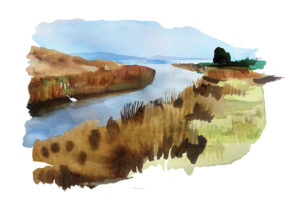
A: Without having the scat in-hand for a good examine, it could be a few things if the pellets are unusually small. First, make sure the scat has a slight point at one end and a slight dimpling on the other end. This will let you know it is likely deer, and not something like cotton-tail rabbit or brush rabbit or squirrel. If it is very small, even for deer, it might be a fawn, especially this time of year. Smaller deer usually make smaller scat.
Also, with dry vegetation during summer, and for the many years we’ve been in this drought, the pellets become smaller and more compact than winter scat. Winter scat in California, where the deer has been feeding off of lush greenery brought on by the rains, also has a tendency to adhere into large clumps or “cakes.” Now why should such a large animal make such small poops? They produce a good quantity of scat over the course of a day, as do many herbivores, but instead of producing one big poo, like cows do, they produce many small ones. Sheep, goats, antelope and other “ungulates” all do the same thing: lots of small poops. Cows and bison are ruminants and their digestive systems work quite a bit differently, so they tend to produce few but very large Frisbee-sized poo. Hope this helps!
– Cat Taylor, Naturalist, East Bay Regional Park District




